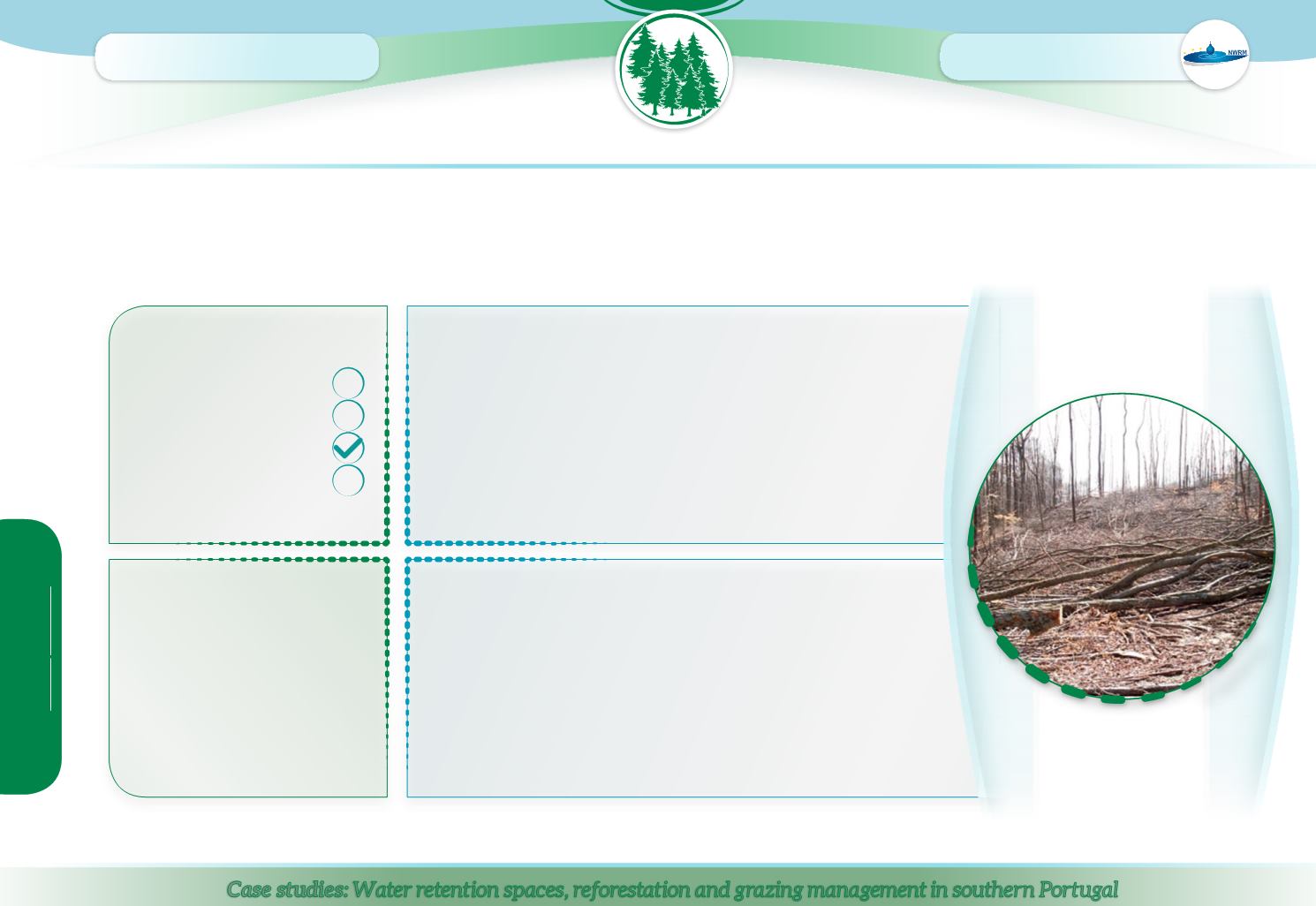
Project funded
by theEU–DGEnvironment
L
andsurfacerelevant
forapplication
Artificial surface
Agriculture land
Forest and semi-natural areas
Wetlands
F
inancialcosts
(C
apital
,
operation
&
maintenance
)
If
newmachines
must be purchased for CCF, it will constitute a cost for the
forest owner or manager. The ongoing maintenance costs associated with CCF should
be similar to those incurred with conventional forestry, except for logging costs,
which may be higher. CCF provides a more continuous income, which may or may
not be beneficial depending on the remaining time between the conversion to CCF
and the originally planned final logging.
D
esign
To achieve maximum benefits, continuous cover forestry should be practiced on a
large spatial scale
and combined with other measures designed to promote
biodiversity in the forest landscape.
S
cale
The measure can be applied at a
local
scale
(less than 10 km
2
) where the
effects will be most apparent.
Continuous cover forestry (CCF) includes a broad range of forest management practices targeting the
reduction in the number or size of clear-cuts,
which may have some beneficial hydrological effects. Continuous cover forestry ensures that there is an uninterrupted tree canopy, which will have higher
interception than a site with discontinuous tree cover, and that the soil surface is never exposed, which will limit sediment production.
Case studies:
Water retention spaces, reforestationandgrazingmanagement in southernPortugal
The measure is not relevant for other se-
mi-natural areas besides forests.
FORESTRY
©
K
y
p
h
ilo
m
.
c
o
m


